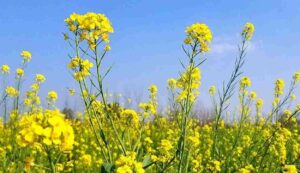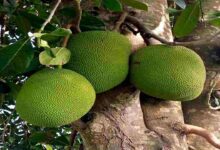Mustard Varieties: Cultivation of these four mustard varieties in the month of October will lead to bumper earnings
Mustard Varieties: India’s principal Rabi crop, mustard, is primarily farmed for its edible oil. Improved mustard cultivars may provide farmers with higher-quality oil and a greater yield. Correct use of these kinds may increase farming’s profitability. Today’s post will provide you with comprehensive information about the four main improved mustard varieties—Pusa Double Zero Mustard 31 (LES-54), Pusa Double Zero Mustard 33, and Pusa Double Zero Mustard 34 (PM-34)—that the Indian Agricultural Research Institute (IARI) has developed and are showing to be advantageous for farmers.

1. Pusa Double Zero Mustard 31
Double Zero Mustard Pusa 31 Pusa is India’s first canola-grade mustard cultivar, created by the Indian Agricultural Research Institute (IARI), with glucosinolate levels of less than 230 PPM and erucic acid levels of less than 2%. This cultivar yields higher-quality oil for farmers.
- Punjab, Haryana, Delhi, Jammu, and North Rajasthan are the sowing areas.
- The average production per hectare is 23.3 quintals.
- A yield of 27.7 quintals per hectare is possible.
Principal Attributes:
- There is 41% oil content in this cultivar.
- It has tiny, golden seeds.
- With branches that have more pods and a height of around 198 cm, the plant produces a larger yield.
2. Pusa Mustard 32 (LES-54)
The Indian Agricultural Research Institute (IARI) created the Pusa Mustard 32 (LES-54) variety, which is a Single Zero type with less than 2% erucic acid concentration. It produces well even in dry spells and low water circumstances.
- Rajasthan, Punjab, Haryana, Delhi, and Western Uttar Pradesh are the sowing areas.
- The average yield per hectare is 27.1 quintals.
- 33.5% of the potential yield per hectare
Principal Attributes:
- This cultivar has a 38% oil content.
- Even in situations of water constraint, it produces a fair yield.
- Because of its strength and compactness, the plant produces more pods.
3. Pusa Double Zero Mustard 33
The Pusa Double Zero Mustard 33 type, created by the Indian Agricultural Research Institute (IARI), has 15.2 PPM of glucosinolates and just 1.13% of erucic acid. In addition to providing premium oil, this type resists the white rust illness.
- Areas to Sow: Jammu & Kashmir, Himachal Pradesh, Delhi, Rajasthan, Punjab, Haryana, and
- The average yield per hectare is 26.4 quintals.
- 31.8% of the potential yield per hectare
Principal Attributes:
- It is good for your health since it contains less erucic acid.
- It is resistant to white rust disease and may contain up to 38% oil.
- Even with low water circumstances, it produces a high yield.
4. Pusa Double Zero Mustard 34 (PM-34)
The Indian Agricultural Research Institute (IARI) created Pusa Double Zero Mustard 34 (PM-34), a single zero category variety with a low erucic acid concentration of 0.79%. This cultivar produces more and can withstand droughts as well.
- Areas that may be sown: Jammu & Kashmir, Himachal Pradesh, Delhi, Punjab, Rajasthan, and Haryana
- Yield: 26.0 quintals per acre on average
- A yield of 30.3 quintals per hectare is possible.
Principal Attributes:
- It has relatively little erucic acid.
- This cultivar is advantageous commercially since its oil content is 36%.
- Its robust, tall plant produces plenty of beans.
Crucial Advice for Growing Mustard
The Indian Agricultural Research Institute (IARI), Pusa, has created improved varieties of mustard; nonetheless, for optimal yields, timing of planting, fertilizer use, and irrigation management are crucial.
- Seed rate: Three to four kg of seeds should be used per hectare for planting mustard.
- Distance between seeds: When planting, allow 30 to 45 cm between rows and 10-15 cm between plants.
- Seed Depth: Plant the seeds in the ground at a minimum depth of 2.5–3.0 cm.
- When to Sow: These enhanced mustard types should be seeded from October 15–20 (timely sowing) or from November 1–20 (late sowing).
- Application of fertilizer: To get a decent yield, apply the appropriate amounts of phosphorus, potassium, sulfur, and nitrogen.
- Irrigation: Determine the quantity of irrigations needed based on the water availability and crop requirements. It just takes one to three irrigations to achieve a fair harvest.

